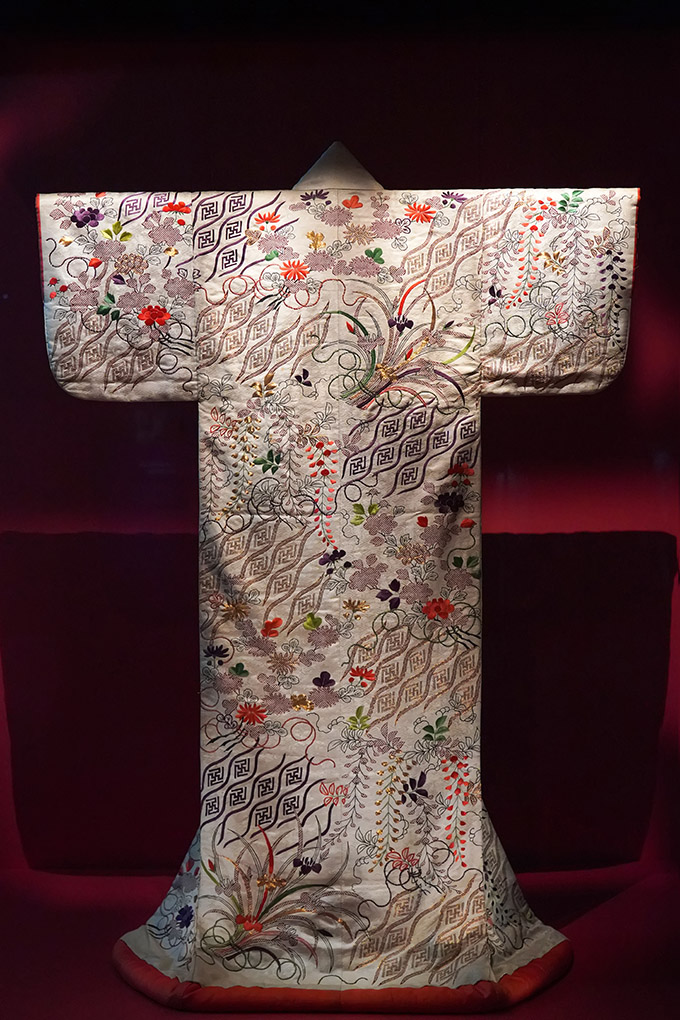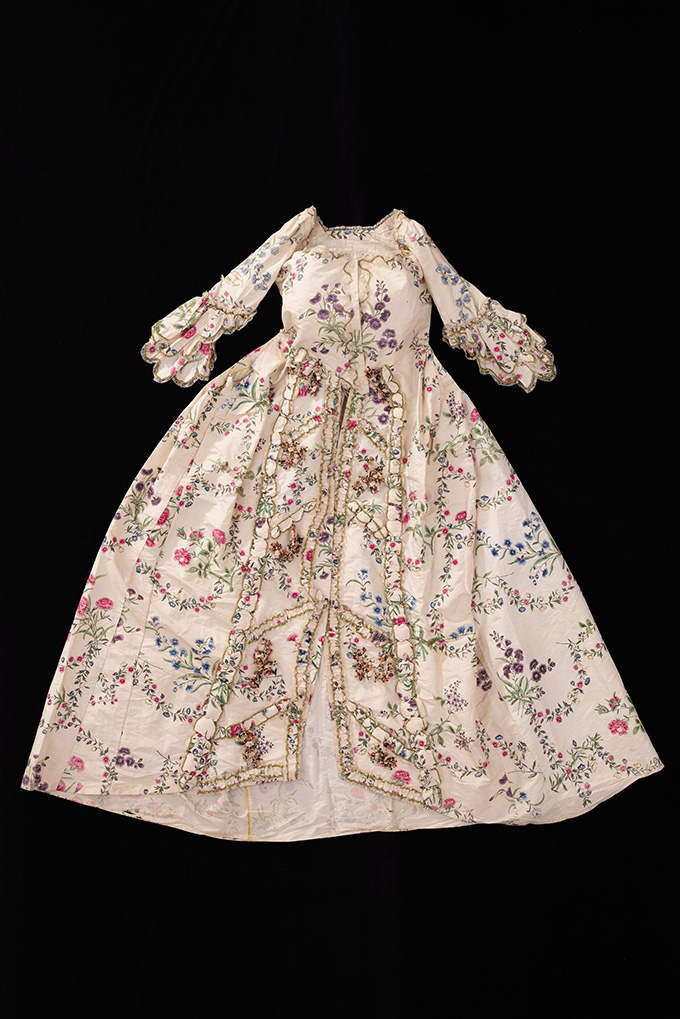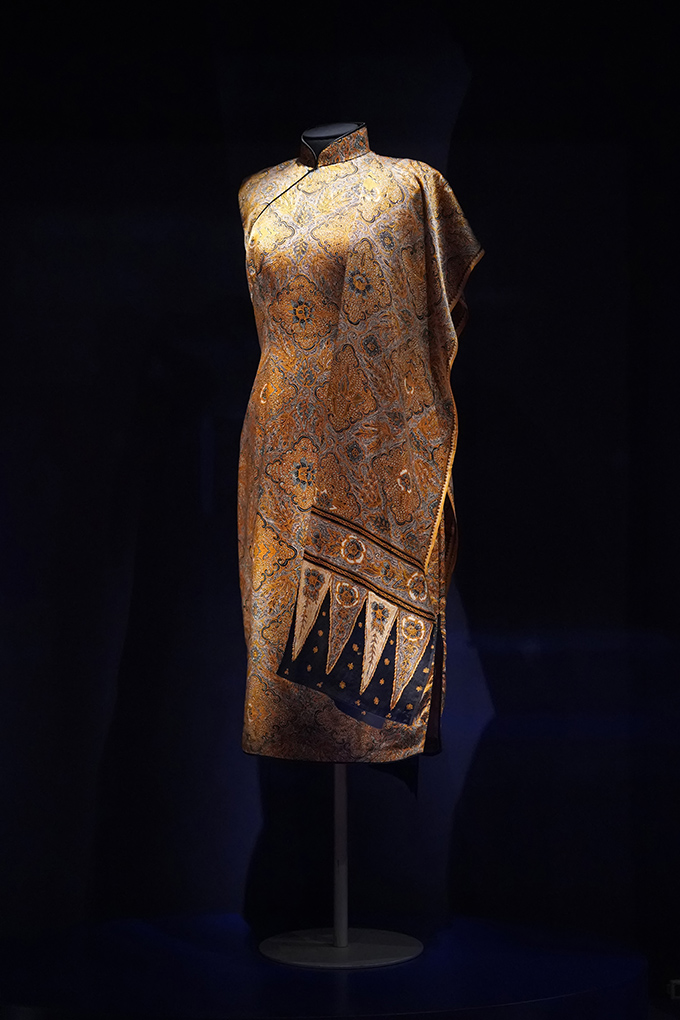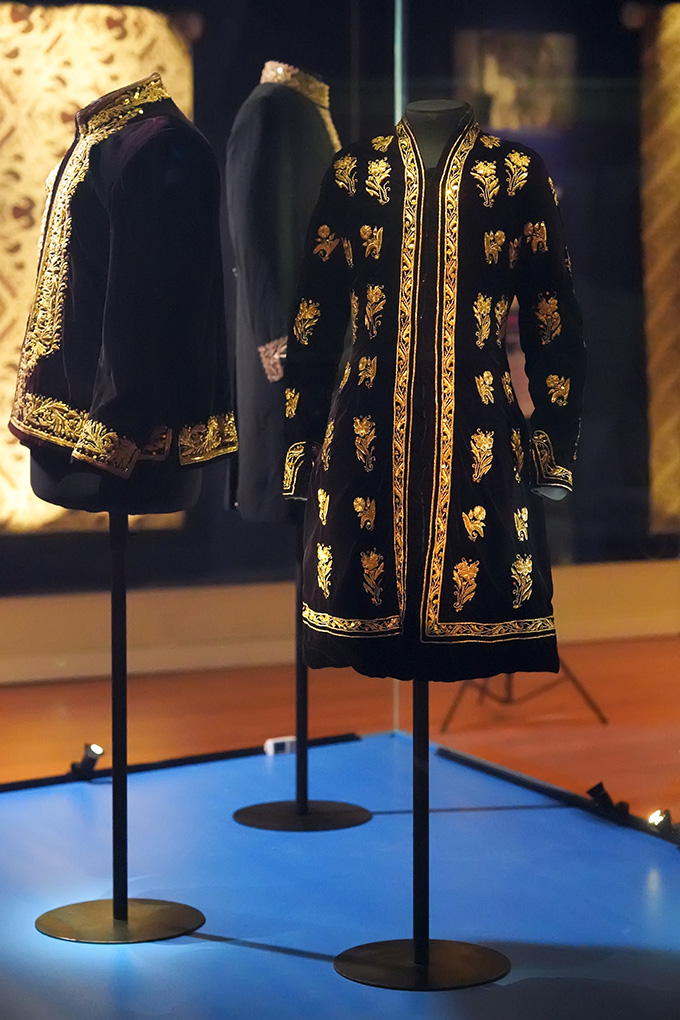When Singapore’s very own Asian Civilisations Museum (ACM) opened its fashion wing last year, it marked a definitive step for regional fashion heritage and museology. In step with its pivot to fashion and the decorative arts, the museum’s Fashion and Textiles Gallery now has a new exhibit on display, Fashionable in Asia. Following the gallery’s debut exhibition, Fashion Revolution: Chinese Dress from Late Qing to 1976, this new display marks the gallery’s second rotation, refreshed with never before seen garments from the ACM’s collection.
For fashion history aficionados, this exhibit will present a newfangled look at the oft-excluded and forgotten artefacts of Asian fashion in Eurocentric accounts of fashion history. The post-war influence on Christian Dior’s New Look? The meteoric rise of the miniskirt as led by Mary Quant and Twiggy? If these movements are familiar to us, Fashionable in Asia makes the case that equally pertinent shifts were happening in our side of the world, too—and deserve the same spotlight. The popularisation of batik, for one, took place in the 1850s as a result of trade and colonisation.

“Asian clothing and textile traditions, while often cited as inspirations by contemporary fashion designers, are less often seen as ‘fashion’ in their own right,” says Conan Cheong, assistant curator of Southeast Asia at the ACM. “At a time when globalised Western dress—jeans, T-shirts and business suits—are displacing more and more the baju kurung, dhoti kurta, and the sarong kebaya in everyday wear, we give equal space in our Fashion and Textiles Gallery to multiple fashion systems in operation throughout the world, not all of which fit neatly within the paradigm of designer fashion.”
Ahead of your visit to the ACM’s new exhibit, read on for the key highlights of Fashionable in Asia.
1. The exhibit features garments from Thailand, Japan, Indonesia, India and Singapore.
From an opulent gold-embroidered ceremonial robe (known as sua khrui in Thai) to an impossibly intricate predecessor of the modern kimono, a kosode from 19th century Japan, the exhibit provides a regional survey of Asian fashion and dress that lend insight into what was deemed valuable between the 18th and 20th century.
“Fashionable in Asia provides a window into fashionable dress in Asia, and is a statement that ‘fashion’ is not only the preserve of the modern West. Asia always had fashion and a sense of what was fashionable at any given moment in time,” says Kennie Ting, director of the ACM and the Peranakan Museum.

2. Most garments on display have never been seen by the public.
With more than 20 pieces recently acquired by the ACM, about 70 to 80 percent of the exhibit has yet to be on public display. This means visitors will be some of the first few to view these pieces in person—an enticing draw for any fashion history enthusiast.
“As Singapore’s national museum of Asian antiquities and decorative art, we hope visitors come to appreciate the beautiful dress and textile traditions in Asia, which rival the best of the West; and also come to celebrate the figure of the Asian designer and artisan, sometimes named, more often anonymous, who have helped to set standards of aesthetic excellence for the world,” says Ting.

3. An exquisite Chinese gown made in Great Britain in the 1770s will join the display in September 2021.
Yet another recent acquisition for the museum, a 1770s sack-back silk gown (also known as robe à la française) made in Great Britain and painted in Guangdong will be joining the display in September. This type of gown might bring to mind the likes of Marie Antoinette with its open front showing a decorative petticoat, and the historical origins line up—sack-back gowns were very much in vogue in 18th century Europe.
But this specific garment set to join the exhibit is unique for its signs of cross-cultural influence. Notably, look out for its make and material—the silk it’s made out of was likely painted in China to meet European demands for the painted cottons from the Coromandel Coast in India. This particular dress encapsulates the ACM’s interest in uncovering the influence of trade on fashion, and will likely be a sight to behold in person.

4. The exhibit features a batik cheongsam owned by the late Kwa Geok Choo, wife of Lee Kwan Yew.
As Singapore’s resident repositories of historic fashion, it makes sense that the ACM would find this gem from the archives of the National Museum of Singapore. Look out for a cheongsam with a matching shawl in the exhibit, as this batik ensemble was owned by the late Kwa Geok Choo (1920-2010), accomplished lawyer and wife of Prime Minister of Singapore, Lee Kwan Yew.
Made in the 1990s, this was likely worn at public ceremonies and appearances, perhaps diplomatic meetings with dignitaries from Indonesia or Malaysia. By the 1970s, tailored cheongsams dipped in popularity as everyday wear in Singapore. But as women in power such as Kwa wore them in the public eye in the 1990s, cheongsams were quickly revived as formalwear.

5. It will run for a year.
Due to the fragile and light-sensitive nature of textiles, it is common—and crucial—practice for fashion exhibits to be rotated to allow for any conservational upkeep and preservation. Like its predecessor exhibit, Fashionable in Asia will stay on display for a year until the next rotation comes along.

Fashionable in Asia is open from 5 April 2021 in the Fashion and Textiles Gallery at the Asian Civilisations Museum. Entry is free for Singaporeans and Permanent Residents. For more information, visit the ACM’s website.





